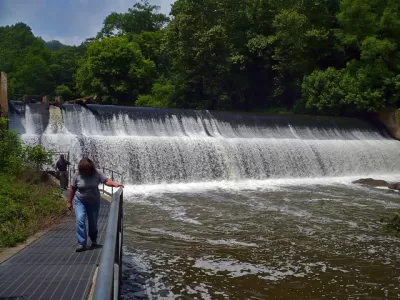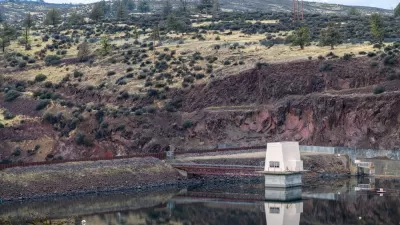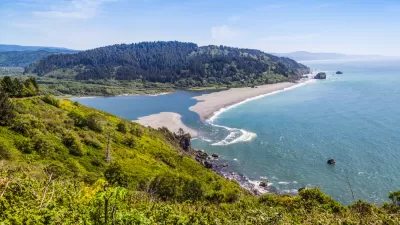The Bloede Dam was the most downstream of a series of three dams on the Patapsco River in the Patapsco Valley State Park in Maryland. Now all three dams have been removed, concluding with the Bloede Dam, and the river runs free.

Jessie Thomas Blate writes to commemorate the completion of a dam removal project on the Patapsco River in Maryland.
American Rivers undertook the project to remove the Bloede Dam on the Patapsco River in Patapsco Valley State Park in Maryland.
"American Rivers removed two dams upstream in 2010—Simkins Dam and Union Dam. Finally, more than 65 miles of spawning habitat for blueback herring, alewife, American shad, hickory shad and more than 183 miles for American eel have been reconnected in the Patapsco," according to Thomas Blate.
The article includes photos of the site in its current state, ready for outdoor recreation but also still in a fragile state of recovery.
For more background on the project, see also a news article by Cody Boteler, published in the Baltimore Sun in August 2019, and an opinion piece by Richard B. Karel, published by The Washington Post in June 2019.

Manufactured Crisis: Losing the Nation’s Largest Source of Unsubsidized Affordable Housing
Manufactured housing communities have long been an affordable housing option for millions of people living in the U.S., but that affordability is disappearing rapidly. How did we get here?

Americans May Be Stuck — But Why?
Americans are moving a lot less than they once did, and that is a problem. While Yoni Applebaum, in his highly-publicized article Stuck, gets the reasons badly wrong, it's still important to ask: why are we moving so much less than before?

Research Shows More Roads = More Driving
A national study shows, once again, that increasing road supply induces additional vehicle travel, particularly over the long run.

Judge Halts Enforcement of Anti-Homeless Laws in Grants Pass
The Oregon city will be barred from enforcing two ordinances that prosecute unhoused residents until it increases capacity and accessibility at designated camping sites.

Advancing Sustainability in Los Angeles County Schools
The Los Angeles County Office of Education’s Green Schools Symposium brings together educators, students, and experts to advance sustainability in schools through innovative design, climate resilience strategies, and collaborative learning.

Using Old Oil and Gas Wells for Green Energy Storage
Penn State researchers have found that repurposing abandoned oil and gas wells for geothermal-assisted compressed-air energy storage can boost efficiency, reduce environmental risks, and support clean energy and job transitions.
Urban Design for Planners 1: Software Tools
This six-course series explores essential urban design concepts using open source software and equips planners with the tools they need to participate fully in the urban design process.
Planning for Universal Design
Learn the tools for implementing Universal Design in planning regulations.
City of Moreno Valley
Institute for Housing and Urban Development Studies (IHS)
City of Grandview
Harvard GSD Executive Education
NYU Wagner Graduate School of Public Service
City of Cambridge, Maryland
Newport County Development Council: Connect Greater Newport





























